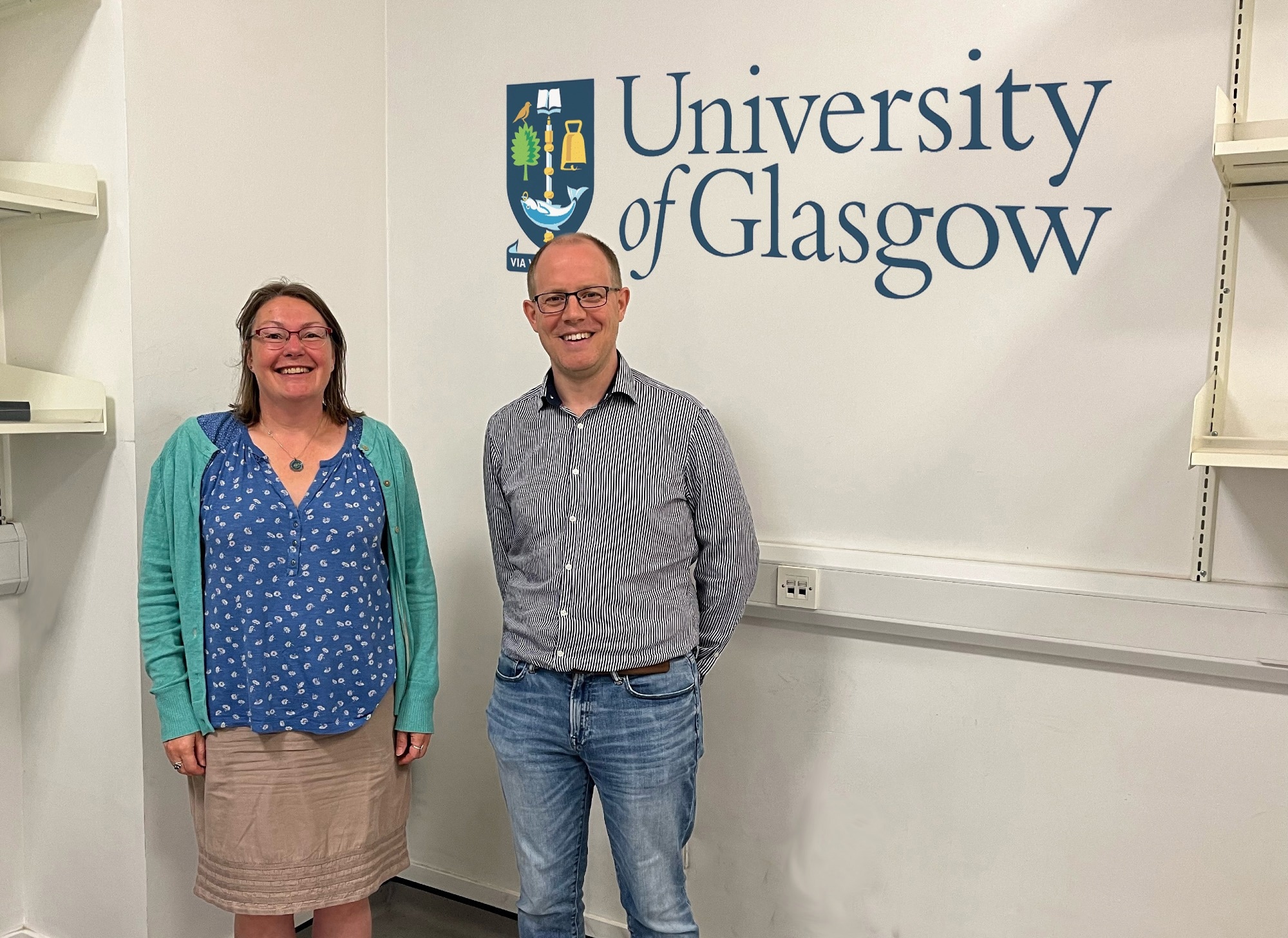Rigaku is maintaining momentum in the field of electron diffraction (ED) and is proud to announce the sale of another XtaLAB Synergy-ED. The most recent sale will see a system installed at the University of Glasgow, where it will be a flagship instrument in a materials characterization analytical hub and serve researchers across the Scotland and northern England region.

Prof. Ross Forgan and Dr. Claire Wilson who won funding to acquire a Rigaku XtaLAB Synergy-ED electron diffractometer for the University of Glasgow. Image credit: Rigaku
The Rigaku XtaLAB Synergy-ED was the world’s first turnkey electron diffractometer and complemented Rigaku’s crystallography portfolio, including powder and single crystal X-ray diffractometers. Although electron diffraction has been around for some time, it was not until the release of the XtaLAB Synergy-ED that a fully integrated hardware and software package was available for crystallographers. This installation will mark the seventh in Europe and the third in the United Kingdom.
Prof. Ross Forgan and Dr. Claire Wilson spearheaded the successful EPSRC (Engineering and Physical Sciences Research Council) grant application and they are grateful for the funding they have received. They are also appreciative of the significant amount of support their application received from neighboring universities and companies, whose demand for access to electron diffraction technology helped secure the funding.
When asked why electron diffraction technology was so important to the University of Glasgow, Prof. Forgan explained, “There are many materials, such as MOFs (Metal-Organic Frameworks), where growing crystals large enough to characterize by X-ray diffraction (XRD) using either a home lab or synchrotron can be extremely difficult and time-consuming. We have had great success using electron diffraction for identifying structures of nano-sized crystals, structures that were inaccessible using XRD. To date, access to electron diffraction capabilities has been very limited, so having in-house capabilities to efficiently carry out this type of research is extremely desirable.” He went further to say, “We have had tremendous support for our grant proposal from neighboring universities as well as companies in areas such as pharmaceuticals, batteries, and energy materials who will be keen to make use of the system.”
Dr. Wilson added, “The system will be installed in a multi-user facility and it was important to us to choose an electron diffractometer that was user-friendly, didn’t require electron diffraction experts to run, and where users can be trained to use the instrument independently. The Rigaku XtaLAB Synergy-ED certainly satisfied this requirement, as well as offering temperature controlled and cryo capabilities, and for those of us with prior experience with Rigaku’s CrysAlisPro software, the transition from XRD to ED should be very easy.”
Dr. Mark Benson, General Manager, Global Sales & Marketing, Single Crystal SBU at Rigaku responded, “We are proud of the foresight shown by the UK funding agencies, having recently approved funding for the third XtaLAB Synergy-ED electron diffractometer. They obviously understand the important role that crystallography plays in the fundamental understanding of materials and chemicals such as pharmaceuticals. By making this technology available to more researchers, it can only be seen as a good thing for our research community.”
For more information about the Rigaku XtaLAB Synergy-ED, please visit www.rigaku.com/products/crystallography/synergy-ed